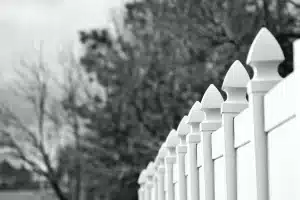At Utah Fencing Company, we’re not only passionate about crafting modern fencing solutions but also appreciative of the rich history and tradition that fencing holds. In this blog post, we’ll take you on a journey through time, exploring the fascinating history of fencing, from its ancient origins to the modern trends that shape the sport and industry today.
The Ancient Roots
Fencing has ancient origins, with evidence of swordplay dating back thousands of years. Here are some key milestones in the early history of fencing:
- Ancient Egypt: Depictions of fencing-like activities appear in Egyptian artwork and hieroglyphics dating as far back as 1200 BCE.
- Ancient Greece and Rome: Fencing was a respected art in both ancient Greece and Rome. It was an essential skill for warriors and gladiators, and training schools existed to hone their techniques.
- Medieval Europe: The Middle Ages saw the emergence of various sword-fighting schools and martial traditions, with fencing manuals and treatises providing detailed instructions on combat techniques.
The Renaissance and Classical Fencing
The Renaissance period brought significant advancements in fencing techniques and formalized rules. Fencing masters like Fiore dei Liberi and Joachim Meyer contributed to the development of fencing as an art form. The rapier became a popular weapon of choice, and elaborate duels were often fought to settle disputes.
The Transition to Modern Sport
The 18th and 19th centuries marked a transition from dueling to modern sport fencing. Key developments during this period include:
- Introduction of Foil: The foil, a practice weapon with a blunted tip, was introduced in the 18th century as a safer training tool.
- Rules and Scoring: Fencing clubs and academies began adopting standardized rules and scoring systems to facilitate competitive matches.
- Épée and Sabre: The 19th century saw the introduction of the épée and sabre as fencing disciplines, each with its own distinct rules and techniques.
Fencing in the Modern Era
The 20th century saw the expansion of fencing as a global sport, with the establishment of governing bodies like the International Fencing Federation (FIE). Fencing became an Olympic sport in 1896, and women’s events were added in 1924. Modern fencing includes three primary disciplines:
- Foil: A thrusting weapon with a rectangular blade. Foil fencing emphasizes precision and strategy.
- Épée: A heavier thrusting weapon with a larger guard. Épée fencing allows hits to any part of the body, making it a tactical and defensive discipline.
- Sabre: A cutting and thrusting weapon with a curved blade. Sabre fencing emphasizes speed and aggressive tactics.
Modern Trends and Innovations
Fencing continues to evolve with advancements in technology, training methods, and equipment. Modern fencers benefit from electric scoring systems, lightweight protective gear, and video replay for match analysis. Fencing also maintains its status as an exciting and dynamic Olympic sport, captivating audiences worldwide.
Conclusion
The history of fencing is a testament to the enduring appeal of this ancient art and sport. At Utah Fencing Company, we appreciate the rich heritage of fencing while embracing modern trends in fencing solutions. Contact us today at 801-905-8153 or visit our website at utahfencing.co to explore our contemporary fencing options, combining tradition and innovation.




